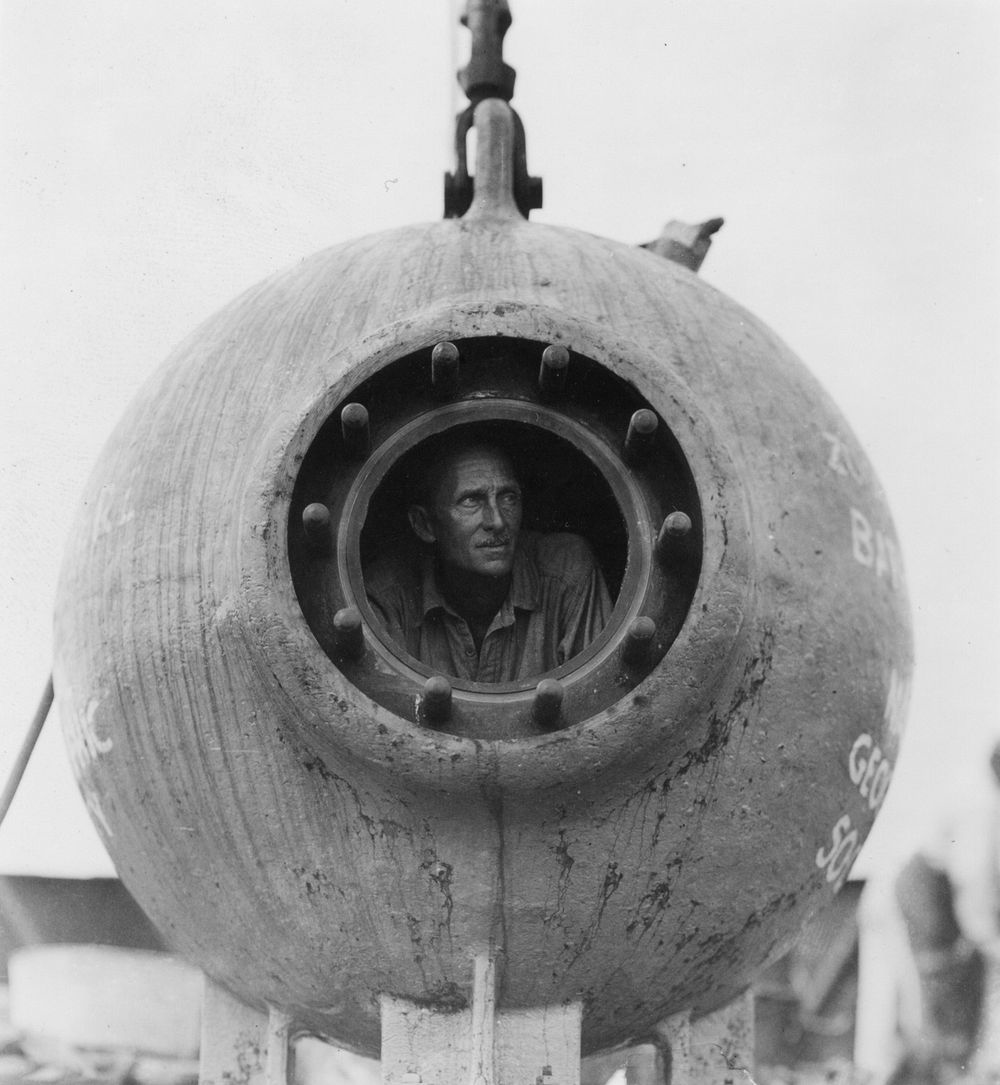William Beebe Broadcast Live on NBC 2,640 Feet Under the Sea

Radio has started countless thrills coursing through space but few, if any, have caught hold of the world's imagination in the same way that the broadcast of William Beebe, scientist and student of ocean life, will do when he talks to the anxious world from the ocean bottom on Sunday Sept. 11 over the NBC networks.
Hundreds of thousands of radio fans will travel in imagination with Beebe when he enters his frail bell-shaped craft and is lowered -- gently -- slowly until he signals that he is within one mile of the ocean bottom. No one has ever done that before. Maybe Beebe, great scientist that he is, won't succeed.
Should the smallest plan miscarry, Beebe will never more be heard from. Every possible precaution has been taken. Oxygen tanks, delicate instruments, air-tight compartments have been provided. But who is there to know what sort of dangers this one human being floating 2,640 feet below the surface of the sea may encounter? No human has even before succeeded in penetrating to such depths. Suppose a long-armed octopus should twine its deadly coils about the slender line that connects Beebe's craft with the S.S. Ready up on the surface. Suppose the pressure should prove greater than was anticipated and the ball cracks. Suppose water begins seeping in -- one drop and Beebe would be lost to the world. There are many things that could happen to make success an illusion.
Beebe will broadcast from the ocean depths. If you are listening in on your radio and the broadcast stops suddenly, it may mean that you are an actual earwitness to a world tragedy. One of the million unforeseen possibilities for failure may at that moment have befallen one of our most noted scientists.
Encased in a steel ball, especially reinforced to withstand the tremendous pressure of the water and suspended by a chain from the S.S. Ready, Beebe will slowly be lowered to a depth of 2,640 feet beneath the ocean's surface. His strange craft will be equipped with oxygen tanks and lighted by electric torches. A powerful headlight will search out the fishes and exotic life that inhabit the eternally darkened underworld.
The floor of the ocean, at its depth near Nonsuch, 10 miles off the coast of Bermuda, where Beebe will do his work, is dark beyond description, the scientist says.
There is not the slightest ray of light anywhere beneath a few hundred feet of the surface and no vegetable life exists at all in the stygian depths. The fishes are entirely carnivorous and the law of eat or be eaten has full play. Should anything happen to Beebe's bell-like craft he would not have the least chance of rescue. The frigid water would kill a human being practically instantaneously and the marine life devour a man in a matter of minutes.
The bell in which Beebe will be temporarily sealed is only large enough comfortably to accommodate the scientist, but an NBC microphone at his elbow will make the entire radio world his companion. Ford Bond, NBC announcer from the deck of the S.S. Ready, will describe the preparations for Beebe's descent at 11 a.m., and the scientist himself will be heard just before he is locked in his cell. He will also speak after being sealed in the steel sphere.
As Beebe disappears beneath the waves, the broadcast will be discontinued until 2 p.m. when the ball will have descended to the expected half-mile depth. Beebe's furthest descent to date beneath the surface has been 1,426 feet, or a quarter of a mile.
Combined NBC networks will carry a complete account of the trip, and Beebe himself will describe his sensations as he sits in the pendulum-like shell 2,640 feet under water. The scientist will peer through a window of heavy quartz class, and by the aid of his searchlight describe what he sees. The broadcast will end at 2:30 p.m.
Louise Boyd in Radio Guide, Sept. 11-17, 1932
Add a Comment
All comments are moderated before publication. These HTML tags are permitted: <p>, <b>, <i>, <a>, and <blockquote>.
Top 10 Articles
- The Marriage of Don Ameche and Honore Prendergast
- The Night Arthur Godfrey Fired a Singer On Live Radio
- Early Radio Announcers Invented Their Profession in the 1920s
- The Mythical Town of East Tincup, Colorado
- The Earliest Radio Shows of the 1920s
- The Great Radio Detectives of the 1950s
- The Home Life of Jack Benny
- Why Vladimir Horowitz Stopped Performing in the 1930s
- Judy Canova: The Queen of Hillbilly Hokum
- Some of the Unsung Heroes of Radio

